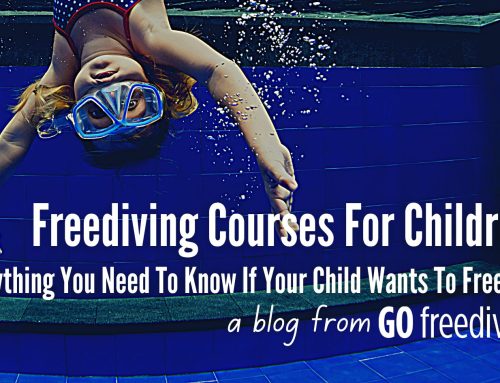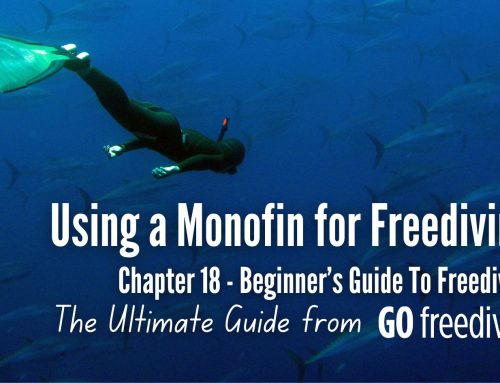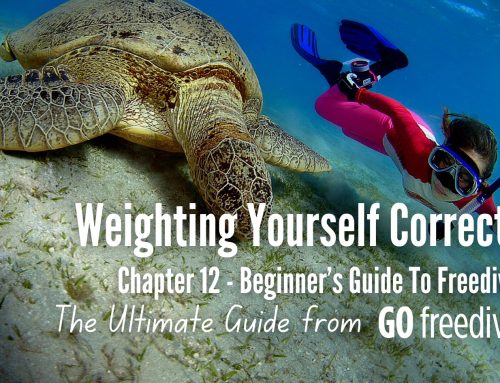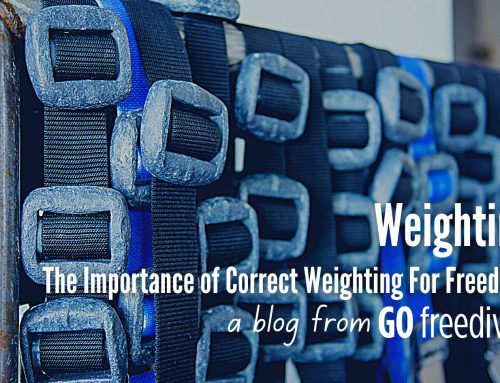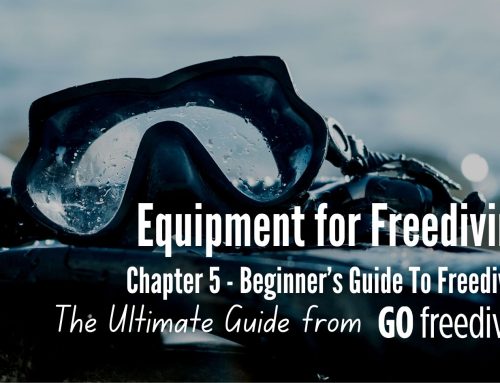The grass is always greener on the other side of the fence, or in the world of freediving, the water is always bluer on the other side of the reef. Envy is a part of life, it’s one of the seven deadly sins, but what are five things that are guaranteed to give you dive envy? I’ve had a think, I’ve had a dream, and I’ve got my list down. Let’s see if you agree…
#1 – Hands free equalisation
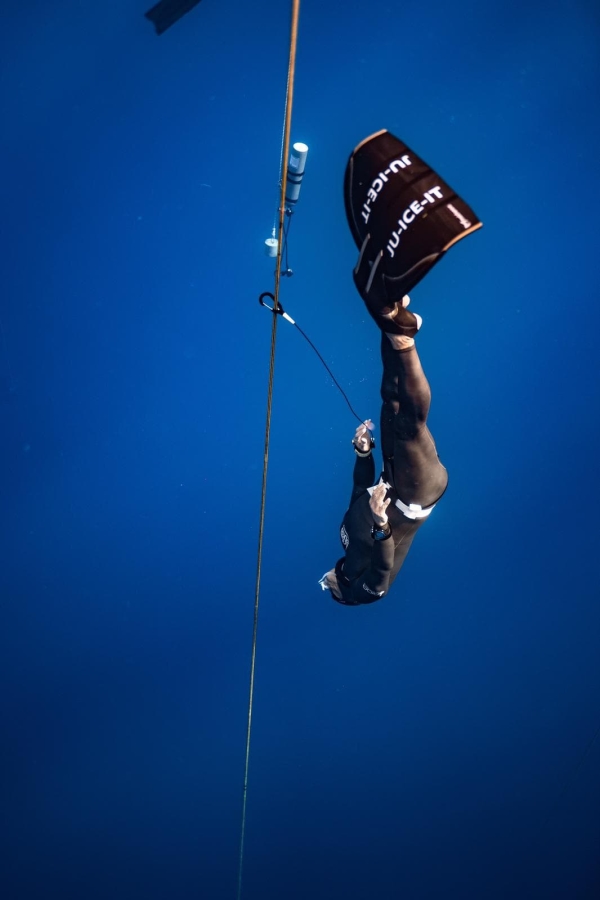
photo credit Daan Vehoeven
When I first learnt to freedive, it took me a year to be able to equalise head first. I spent hours in the water on the surface, my bum in the air, my hand on my nose, moving my head from side to side to try and make it happen. It was the most frustrating thing to witness people with no equalisation problems zipping up and down beside me.
Even when I learnt to equalise head first, equalisation was always an issue. I still have to concentrate on every aspect of my equalisation and it is never something I take for granted. So, when I have a student who says to me ‘I don’t need to touch my nose, I just wiggle my jaw and it just happens’ I have to grit my teeth as the green mist descends and resist the urge to yell ‘Give me your head! Oh, for the love of God why wasn’t I born with your eustachian tubes?!’
Hands free equalisation, also known as BTV (béance tubaire volontaire) is a technique that some people can learn but most people can’t. It’s easier to do on land head first and a technique you can try now. Hum, and then move your jaw forward and down, if the hum gets really loud in one or both ears then you have opened the eustachian tube and performed hands free equalisation! I can sometimes do this in my left ear but never my right, and I’ve never been able to do it in the water.
If you can perform hands free equalisation it makes everything about your dive easier, and usually you have far less risk of hurting your ears through failure to equalise. Some people dream of being able to fly, I dream about being able to equalise hands free, and so anyone who can do it gives me dive envy.
#2 – A Molchanov Monofin

Freediving equipment can be like cars, something you stand next to, occasionally stroke, and sigh with appreciation. The more expensive, the more exclusive, the shinier, the bigger the sigh and the bigger the dive envy.
Monofins are a particular piece of freediving equipment that invoke a very particular reaction. They are usually handmade, often for an individual person, and as such, are very special. They aren’t knocked off a production line in their thousands, they are unique and bespoke, the freediving equivalent of a Stradivarius violin.
Molchanov’s fins are particularly beautiful and extremely well made. I should know, I’ve seen what goes into measuring your feet for one, and I’ve shoe horned my own feet, like one of Cinderella’s step sisters into the one Go Freediving instructor Pash Baker has in order to swim with it in our local pool.
I asked her about choosing and ordering her fin:
‘I’d been thinking about getting a monofin for some time but I wasn’t sure what to get. I imagined they would all be fairly similar, but I hadn’t tried any. I had the chance to try out 8 different monofins at a Go Freediving club session and quickly realised that not all monofins are created equal. The design of the Molchanovs fin is such that it is much more stable in the water and easier to use once you have established the correct finning technique. It is also super quick through the water, really efficient to use.
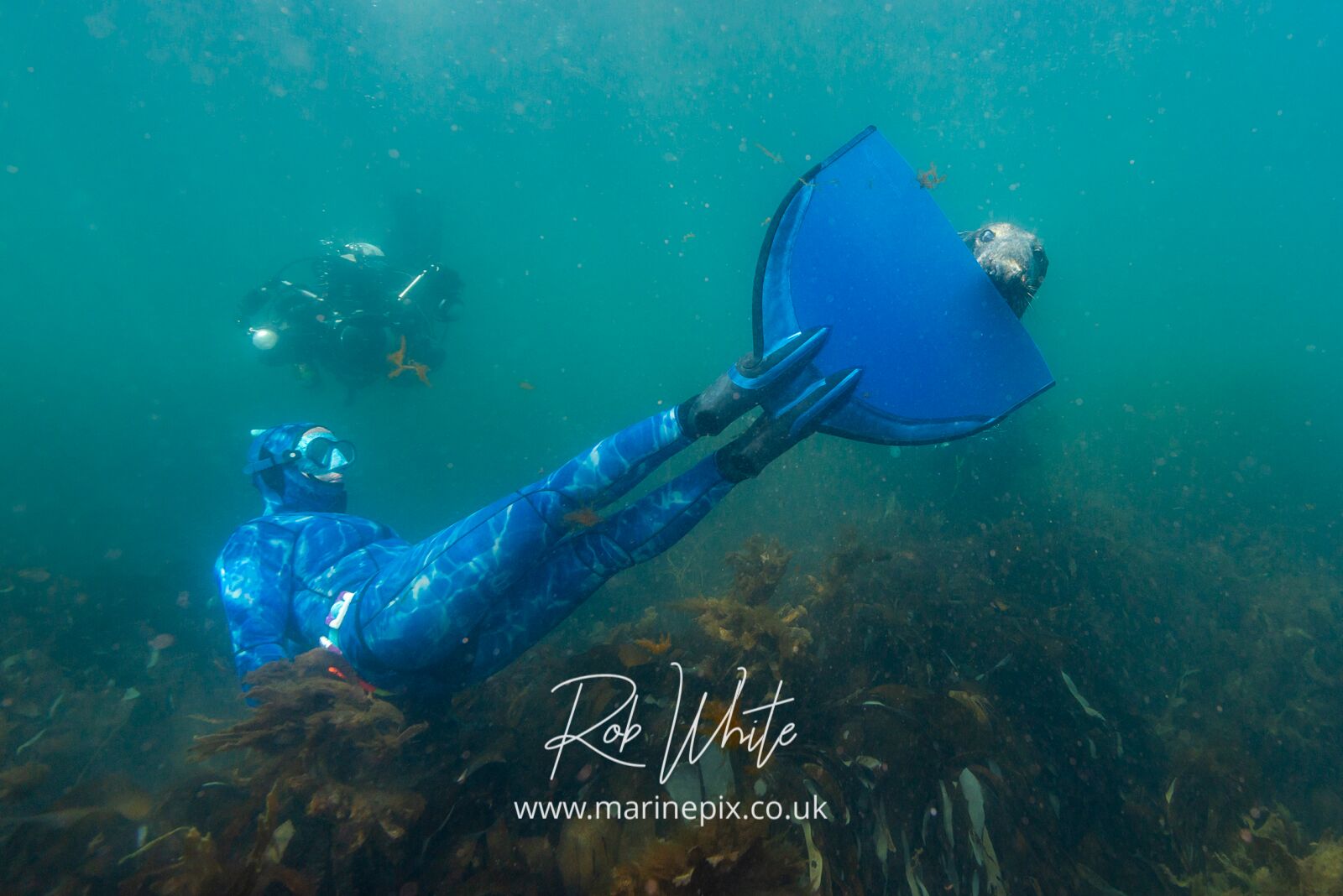
Photo credit: Rob White
One of the aspects of this fin which sets it apart from its competitors is that it is fully customisable and will be designed and built to meet your own measurements. As part of the order process, you provide a number of foot and arch measurements, and there are a lot of options as to blade stiffness, arch support, foot pocket type, fit and colour. You can basically design your own monofin to your own specification.

Photo credit: Rob White
I’m thrilled with mine and the first time I used it in open water was at Lundy Island freediving with the seals. They took great interest in me and my fin, they were extra playful with me, possibly as I was very quick through the water and agile. Luckily although they were interested, they didn’t “taste” my monofin like they do with scuba fins. Maybe they realised it was a Molchanovs!’
So why don’t I have one? Why am I still exhibiting a full on case of dive envy?
Well the answer to that is simple. They are EXTREMELY expensive… A custom made S1 with bag will set you back €810 but then you have to add on postage, 20% import duty and customs handling fees. So, if I were to buy one then it would cost me nearly a thousand euros which is money I simply can’t afford to spend on a monofin. Hence the dive envy…
#3 – No fear
I would argue that fear is a healthy and necessary emotion when approaching freediving. It keeps us safe and often prevents us making rash decisions. However, I do have envy for freedivers who seem to have no fear, and are able to explore their limits safely because of it.
I see this in students as well. They might be really physically capable freedivers, but they are held back from getting more out of the sport because of their fear: Their fear of water, sharks, death, their perceived lack of ability or any other conscious or subconscious fear.
This is what one such student told me when I asked them about fear during freediving:
‘Fear- respect of the water is no bad thing. However, fear of depth, your own capabilities, even distrust of a buddy, can be crippling when freediving. I’m still striving toward a healthy balance between fear and risk, my head tells me I am capable of much more but there is something still holding me back.’
Fear can actually be dangerous. It can make us panic which is the last thing you want to do during a freedive. Being able to remain calm and controlled under pressure can keep you from blacking out or save your life or your buddy’s. I once was in a competition in a lake in Switzerland where the water was cold and very murky. On my descent, my lanyard got caught on the line at 10 metres. I had to invert and untangle it and then continue my descent. My weight belt then came off my hips and caught around my shoulders. At the bottom of the line, there was nothing to separate the tags from the lanyard, so as I turned, my lanyard got caught around the multitude of tags at the bottom, and when I tried to ascend I was stuck. I activated the lanyard quick release and freed myself, but the thought kept running through my mind – ‘This is the first time in my freediving career that I might have a black out.’ I knew that the most important thing was to remain calm, so with every monofin stroke I said to myself ‘I am okay’ and tried to keep my fear at bay. It worked and I was hardly out of breath at the surface, despite everything that had gone wrong.
Another example of calm under pressure is in the 2019 film Last Breath, about a commercial diving accident. It shows people reacting to a terrible situation without their fear crippling their decisions and actions.
#4 – Incredible dive encounters with underwater creatures
On one freediving trip we ran a few years ago, one student (who shall remain nameless) spent a lot of the time name dropping whales he had dived with like Hollywood celebs he’d bumped into in the supermarket. He was showing off just how many stars of the underwater world he had dived with, and unsurprisingly we were all very jealous.
On one freediving trip we ran a few years ago, one student (who shall remain nameless) spent a lot of the time name dropping whales he had dived with like Hollywood celebs he’d bumped into in the supermarket. He was showing off just how many stars of the underwater world he had dived with, and unsurprisingly we were all very jealous.
Most people, non-divers included have a dream to swim with dolphins. However, freediving with dolphins is like a gateway drug to cetacean cocaine, and before you know if, you’re re-mortgaging your house and flying around the world chasing bigger and better marine mammals.
I have had the chance to freedive with wild dolphins and they were some of the most incredible underwater experiences of my life. Watching The Blue Planet, and seeing footage of humpback whales in Tonga on a 8K TV makes my heart cry out to be able to share the water with them.
#5 – Exotic freediving locations
Hang out with enough divers and you hear the same question – ‘so where have you dived then?’ Often this is not an attempt to find out an answer, but more an opportunity for the questioner to then regale their target with the locations of everywhere THEY have dived.
I have had the opportunity to freedive in some incredible places, however there are always other locations that I would love to visit but time and funds won’t allow.
Top of my list is Raja Ampat in Indonesia, Roatan island in Honduras, and the barrier reef around Belize, which is second only in size to the great barrier reef of Australia. All three have been recommended to me
The Raja Ampat Islands are an Indonesian archipelago off the northwest tip of Bird’s Head Peninsula in West Papua. Comprising hundreds of jungle-covered islands, Raja Ampat is known for its beaches and coral reefs rich with marine life.
Roatan island is found 30 miles off the northern coast of Honduras. The island’s marine life can be found on both shallow reefs and plummeting walls. It is well-known as a destination for macro critters and majestic whale sharks. With coral gardens, shipwrecks, sand flats,, shark dives and more there’s never a dull moment underwater.
The Belize Barrier Reef is the second largest barrier reef in the world and measures 190 miles long!
The barrier reefs and their lagoons give divers a different dive experience than the atolls and closer to shore are the fringing reefs and numerous patch reefs. The site is made up of seven marine reserves and covers about 12% of the total reef and is a unique opportunity to dive with whale sharks.
So what gives you dive envy? Let us know!
Learn to freedive with Go Freediving
Go Freediving is the longest established, most experienced and friendliest freediving course provider in the UK, led by world class freediving instructor trainer Emma Farrell, and her team of personally trained instructors. No other course provider has such a good instructor to student ratio, safety record and personal touch.
Whether you’re a beginner dipping your toes into the world of freediving, a seasoned pro looking to turn professional, or simply a freediver of any level who wants the best freediving holiday in the world, we’re here for you!
Keep in touch with everything Freediving
Subscribe to our mailing list for weekly newsletters with exclusive articles, news, films, offers and more!
And check out You Tube!


